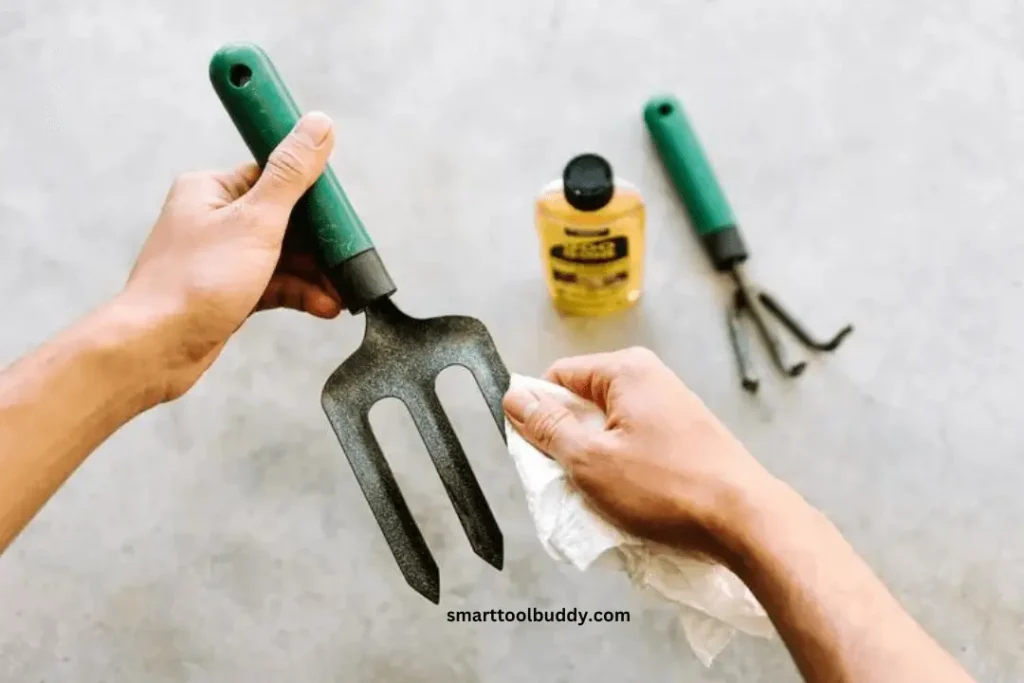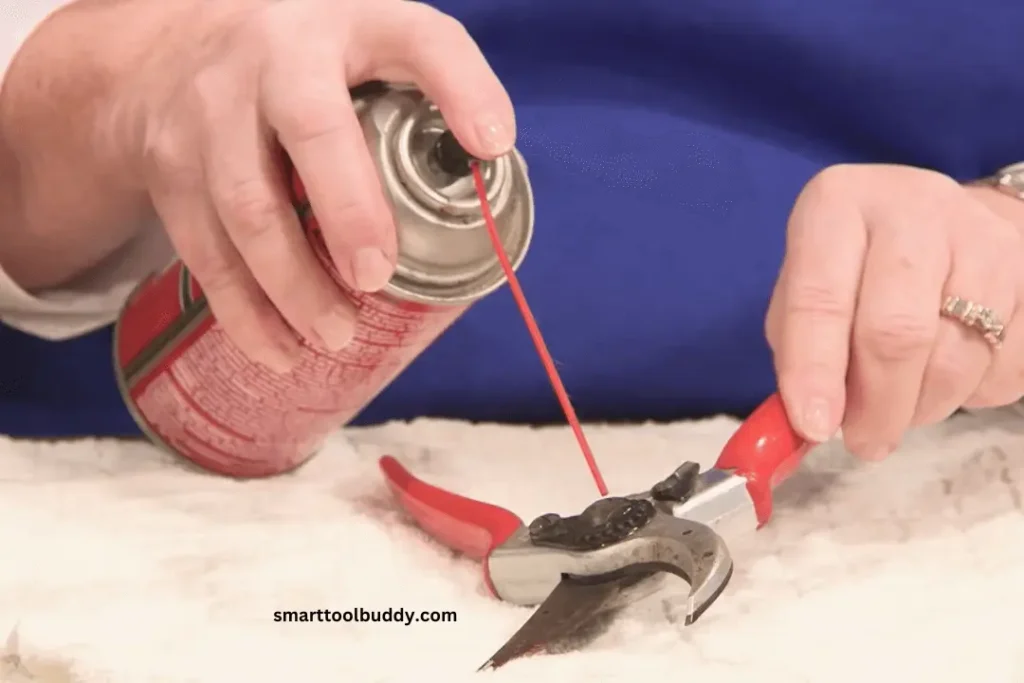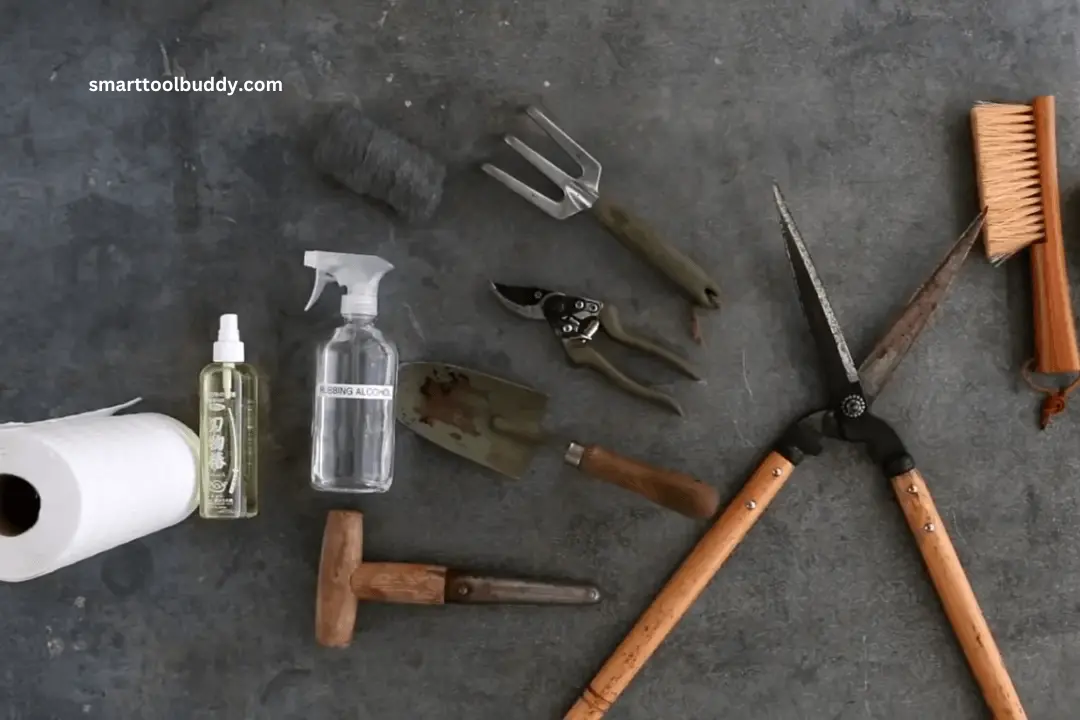Easy Ways on How to Clean Garden Tools at Home
Gardening is a fun pastime that is enjoyed by millions of people around the world. To maintain an enviable garden, you must keep your tools in order and maintained. In this complete guide, we’ll examine why is it important to clean your garden tools. In this blog you will find step-by-step directions on how to clean them effectively; from stopping the spread of disease to preparing your garden for winter storage. We’ve got your back on how to clean garden tools to prevent disease
In this thorough guide, we explore the most effective methods to maintain how to clean garden tools, with a focus on the most important steps and the materials required. You can also read related posts on smarttoolbuddy
why is it important to clean your garden tools
Regularly cleaning gardening tools stops the spread of diseases in plants cleans up rust and keeps their sharpness. this will explain how to clean garden tools to prevent disease and why is it important to clean your garden tools
Why Is It Important to Clean Your Garden Tools?
Before you begin the process of cleaning, let’s be aware of the reasons why keeping your garden clean tools is essential:
- Stops the spread of disease and insects
- Helps prolong the life of your equipment
- This ensures that you get the best performance
- It saves money over the long term.
- Promotes a healthier garden environment
Prevent the spread of disease (how to clean garden tools to prevent disease)
how to clean garden tools to prevent disease, the reasons listed below are the main reason on why you should clean your tools and how to clean garden tools to prevent disease.
Diseases: Diseases, such as bacteria, fungi, and viruses, can infect garden tools after use. When tools are used on different plants or in dirty areas without cleaning, they can transfer pathogens, which can cause diseases in other healthy plants.
Cross-contamination: Soil workers can carry soil-borne diseases from one area of your garden to another. By cleaning your tools, you reduce the spread of harmful microorganisms and help protect your garden plants.
Prolong the life of the tools by knowing how to clean garden tools to prevent disease
Dirt and Contamination: Soil and plant residues contain moisture and organic matter that can corrode the metal parts of equipment when contaminated. Regular cleaning removes these residues, reducing waste production.
Maintenance: Keeping tools clean makes it easier to check them for damage and perform proper maintenance, such as sharpening the blade. Equipment that is maintained is better and has a longer life.
Materials Needed for Cleaning Garden Tools to know why is it important to clean your garden tools

Before we dive into the specifics of how you can cleanse each kind of tool, let’s collect the materials needed:
- Water
- Mild detergent
- Wire brush
- Steel wool
- Sandpaper
- Rub alcohol or bleach in a solution
- Lubricating oil
- Dry, clean cloths
- Bucket
Step-by-Step Guide on How to Clean Garden Tools to prevent disease

why is it important to clean your garden tools
1. Remove Dirt and Debris
Begin by removing all sap, soil or plant residues off your equipment. Utilize a stiff or wire brush clean away dirt and other debris. For equipment with intricate parts or difficult-to-access areas brushing with a toothbrush is especially efficient.
2. Soak in Soapy Water
Fill a bucket up with warm water, and then add the smallest amount of gentle detergent. Soak your tools in this solution for a while to remove any dirt. After about 10 minutes of soaking then scrub them using the metal wool or wire brush to eliminate any stubborn dirt.
3. Disinfect the Tools
To stop the spread of diseases in plants It is essential to clean the tools you use in your garden. You can make a solution consisting that contains one part bleach to nine parts water or rub alcohol. Dip the tools into the solution or clean them clean with a towel which is soaked in disinfectant.
4. Remove Rust ( how to clean rusty gardening tools )
Rust can severely affect the efficiency of gardening tools. Make use of sandpaper or wire brushes to clean any rust-related spots. If you have rust that is more difficult to remove, think about applying a rust remover. Make sure that all rust has been eliminated prior to proceeding to what’s next.
5. Sharpen the Blades
Sharp tools aren’t just more efficient but are also safer to utilize. Make use of a sharpening tool or a sharpening file to sharpen any edges you have on cutting instruments like shears, pruners and knives. Follow the instructions of the manufacturer to get the most effective results.
6. Lubricate Moving Parts
To stop rust from occurring and to ensure smooth operation apply a thin coat of lubricating oil on components made of metal in your tool particularly those that have moving parts like pruners or shears. Remove any oil residue with a clean, dry cloth.
7. Dry and Store Properly to know how to clean garden tools for winter
After cleaning, disinfecting or oiling the tools you use, let them dry completely with a clean and dry cloth. Keep your gardening tools in a well-ventilated, dry space to keep them from corrosion and damage. A pegboard or in the form of a rack for tools can make them more in order and easy to access.
Special Care for Wooden Handles
Handles made of wood need special care to ensure that they are not damaged by cracks and breaking into splinters. Sand the handles using fine-grit sandpaper in order to smooth any rough areas. Apply a layer of linseed oil in order to provide nourishment to the wood and shield against moisture. The oil should be allowed to sit for a couple of hours, and then clean off any excess oil with an unclean cloth.
Conclusion
Cleaning and maintenance that is done properly on how to clean garden tools to prevent disease is essential to their long-term durability and efficiency. Cleansing, disinfecting and sharpening will ensure that your tools will remain effective in their use and are safe. If you invest in top-quality equipment and taking proper maintenance of them you will benefit from a more productive and satisfying gardening experience.
to Check the Product on Amazon, Click the link below;
https://amzn.to/4ff0oEL
Frequently Asked Questions About Garden Tool Cleaning
What can you wash your tools for gardening?
For the majority of garden tools the simple combination comprising dish soap and water is a good starting point. It is possible to use the bucket, hose and sprayer attachment, or the sink to clean depending on the size of your tools.
If you have a tougher job, think about these alternatives:
1. Removes rust A wire or sandpaper can be used to remove the surface rust.
2. Disease: A diluted bleach solution (1 part bleach to 9 parts water) can aid in disinfecting tools to help prevent the spread of diseases between plants. Be certain to rinse thoroughly and completely dry out to avoid corrosion.
Can you use vinegar to clean garden tools?
It is true that vinegar is an effective natural solution to clean and disinfect your gardening tools. A mixture made of the white and aqua (equal parts) can be used to get rid of the caked-on dirt and dirt. However, vinegar is somewhat corrosive, so you should avoid using it on metallic parts susceptible to rust.
How do you clean your tools step-by-step?
1. Brush off loose debris: Use a stiff brush or rag for removing any debris, dirt, or other debris that is stuck onto the equipment.
2. Wash using soapy water: Prepare a bucket of warm water and dish soap. The tools should be scrubbed thoroughly, focusing on the crevices, and areas in which dirt builds up.
3. Rust Removal (Optional): For equipment that is rusty, you can employ sandpaper or wire brush to eliminate the surface rust.
4. Cleaning (Optional): If required, clean the equipment by submerging them in the bleach solution in diluted form (1 one part bleach, 9 parts of water) for a couple of minutes. Cleanse them well afterward.
5. drying: Let the equipment completely dry before placing them in storage. It is possible to wipe them clean with a clean towel to speed up drying process.
How do I remove dirt and rusty Garden tools?
For tools that are extremely rusted The steps listed above may not be sufficient. This is a more thorough cleaning process:
Douse in penetrating oils: Soak the rusty parts of the tool with an oil that penetrates such as WD-40 for a few hours or even overnight. This will break up the corrosion and make it much easier to get rid of it.
Scrub with a brush and sandpaper Scrub areas that are rusted using a stiff brush and sandpaper, to get rid of the loose corrosion.
Dry and wash: Wash the tool with soapy water, then rinse thoroughly and allow the tool to completely dry.
Protect and oil: Once dry, apply a thin layer in mineral oil, or even linseed oil onto metal components to stop future corrosion.
Be sure to keep your garden tools clean. With the proper maintenance and cleaning the tools you use for gardening will last for many years to the future!
Also Read:


Related Blogs
The Top 10 Best Litter Box for Multiple Cats
5 Best Dry Cat Food for Indoor Cats 2024
Affordable Bluetooth Projector for Gaming: The Best in 2024
The Best Soundbar for Music and Movies for Home Threaters
Stay Powered Up: The Best Portable Charger for iPhone 15 in 2024
The iPhone 15 Pro Max New Features: Comprehensive Features
Liquid Screen Protector vs Tempered Glass: Which is better in 2024
What is a Monkey Wrench: Complete Details
Guide to Cleaning Your Gatorade Bottle The Proper Way
How To Sharpen Garden Hoe: Real Guide to the problem
How to Use a Tack Hammer Nail it Every Time
Changing a Garden Cart Tire: Expert Hacks That Will Save You from $200+ in Repairs
How to Whisk Eggs: Easy Manual Techniques
Garden Fork Vs Pitchfork: Deciding Which Tool Will Meet Your Garden Needs
Conquering the Greens: How to Rake Artificial Grass
How Deep To Plant Daffodil Bulbs? A Simple Guide
How to Pick the Best Shovel for Digging in 2024
The best time to power rake your lawn
Why Your Kitchen Isn’t Complete Without an Acacia Cutting Board
How to Replace Trimmer Line in Bump Feed: Step-by-Step Guide
Perfect Make Matcha Without Whisk: The Ultimate Guide
10 Ways to Remove Snow from Driveway Without a Shovel: Innovative Snow Removal
The Ultimate Guide: How Many Wheelbarrows of Sand Per Bag of Cement
Don’t Make This Silly Mistake with Your 5 Uses of Garden Fork
Is a Spade and a Shovel the Same? Discover the Differences Here
Transform Your Garden with Stunning Garden Stake Ideas You’ll Love
The Best Home Gym Equipment you can get in 2024
The Best Home Gym Setups for Small Spaces
Shoot Like a Pro: The Best iPhone Filmmaking Kit
Are Bone Conduction Headphones Safe?
Revolutionize Your Visual Experience: Best Samsung CF39 Series in 2024